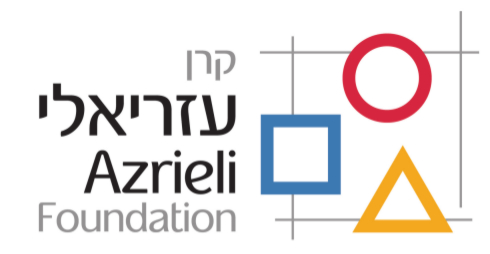The Town that Came Back to Life
100 years since the passing of the tzaddik (righteous man), Rabbi Yeshaya son of Rabbi Moshe

The Jewish town, known today for the grave of Rabbi Yeshaya son of Rabbi Moshe Steiner, is empty of Jewish residents. The Holocaust claimed the lives of its Jewish residents and erased its rich history. Kerestir is the Yiddish name for Bodrogkeresztúr, located in the Borsod-Abaúj-Zemplén area, Tokaj County, Hungary.
Today, Kerestir is an important stop on the “Wonder Rabbis’ Road” – a project of the Jewish community in Hungary with the support of the European Union.
The Hungarian Rebbe’s Route [Hungarian: Csodarabbik útja] is a pilgrimage route initiated by the United Hungarian Jewish Community [EMIH], the status quo community. The route was established with the support of the European Union as the largest Jewish pilgrimage route in Hungary. It is a route of about 150 kilometres, including ten settlements, visiting the Jewish monuments of the “Tokaj-Hegyalja foothills,” or otherwise called the “Tokaj region,” also known as the “Tokaj wine region”, and the remaining or restored remains of Jewish heritage sites. The starting and ending point of the route is the renovated house of the rabbi in the village of Mad, which was opened to the public in 2016. The rabbi’s house hosts an interactive exhibition, a kosher kitchen, and accommodation.
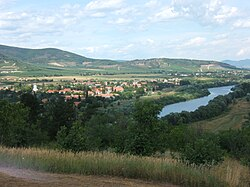
Kerestir (Courtesy of Wikipedia)
The Rebbes’ Route provides an authentic and experience-rich overview of the customs of chassidic Judaism that once existed in the Tokaj wine region. The route passes by the graves of the most famous chassidic rabbis and the areas of their activities. The pilgrimage customarily begins at the Mád Jewish Cultural and Information Center – the former Mád Yeshiva. The circular route is: Mád – Tercal – Tokaj – Bodrogkeresztúr – Olaszliszka – Sárospatak – Sátoraljaújhely – Erdőbénye – Abaújszántó – Tállya – Mád. (Wikipedia).
The Tokaj region – the wine region, which was recognized as a World Heritage Site, was cultivated by Jews in the late 19th century. The beautiful surroundings were battered and ruined by long years of destruction and wars, and according to records, “chassidic” Jews who moved from Poland to Hungary about two hundred years ago transformed the place into a paradise with their diligence, until Tokaj wines once again gained worldwide fame. There are hundreds of vineyards and wineries, including underground wineries that have been preserved to this day, and ancient cellars that are surrounded by the musty aroma of ancient wine, and many come to visit them.
There is no one who has not heard of Tokay wines, and about them Rabbi Nachman of Breslov said: “He who has tasted Hungarian wine, the world will no longer deceive him.”
Kerestir, to the visitor, is like a breathtakingly picturesque postcard. But sadly, the pastoral beauty hides the terrible events that took place there just eighty years ago.
Of the entire large Jewish community of Kerestir, only a few remain. The many storks that nest on the tops of the electricity poles have replaced the tens of thousands of chassidim that made the area flourish and gave it light and life. For decades since the Holocaust, the place was deserted and neglected, poor and backward, until recently many Jews began to return to it again, and those who come, they come with packages, packages of sorrow and longing. And there, hearts open and eyes flow with tears. Rabbi Yeshaya son of Rabbi Moshe was an unparalleled host in his life, and even now, a hundred years after his passing, he still hosts guests in his home. The house where he lived, 67 Kossuth Street, is once again bustling with guests.
At the ohel (mausoleum) on the holy grave, there is no one whose heart does not swell with emotion, and those who come, from all ends of the Jewish spectrum; in Kerestir there are always Jews, sometimes very many and sometimes a little less. And the Jews stand together there, shoulder to shoulder, and talk with G-d. The Jews who fill the streets of Kerestir and sit like kings in its inns are not necessarily descendants of the Jews of the Borsod-Abaúj-Zemplén area. They are actually the minority there. In Kerestir there are Jews from Morocco and Poland, Libya and Latvia, Yemen and Galicia, Jerusalem and Hungary, all gathered, coming to the site of the righteous man who in his life was a symbol of hospitality and love for other Jews.
Kerestir was a major Jewish community, and now, 80 years after its destruction, she welcomes with open arms the hundreds of thousands who come to her with joy and faith, with strength and gladness. On the rivers of Eastern Europe, Jews stand and contemplate the wonderful past that was and is no more, and reflect on the wonderful strength of a resilient people, who have shaken themselves from the ashes and risen to life. This people will never forget what the Nazi Amalek did to them eighty years ago, but at the same time, this people will never sink into the abyss of sadness and despair.
Eighty years have passed since the destruction of Europe, eighty years have passed since the destruction of Kerestir, a hundred years have passed since the passing of the wonderous man, Rabbi Yeshaya son of Rabbi Moshe, so many of whose followers were trapped in the horrible years, and there were also those who preserved in their hearts the secret of their salvation thanks to the promise of Rabbi Yeshaya son of Rabbi Moshe, wonderful and moving stories that were given over to Ganzach Kiddush Hashem. Kerestir and her survivors appear several times in Ganzach Kiddush Hashem’s database of testimonies.
On Iyar 3 (May 1st, 2025), a large gathering will be held in Kerestir, marking the rabbi’s passing. Thousands of Jews will once again fill the picturesque town and prostrate themselves at the holy grave of one who loved all Jews, Rabbi Yeshaya son of Rabbi Moshe.
May the journey of the pilgrims to Kerestir be successful, may G-d protect them in their departure and arrival, and may they return with salvation and comfort for themselves and for all that they have.

From the ancient tombstone: “He raised orphans even as a young person”; “He was never angry”…
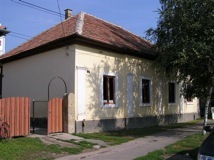
Rabbi Yeshaya’s house
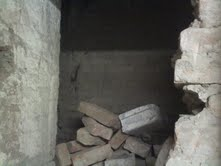
Rabbi Yeshaya’s oven
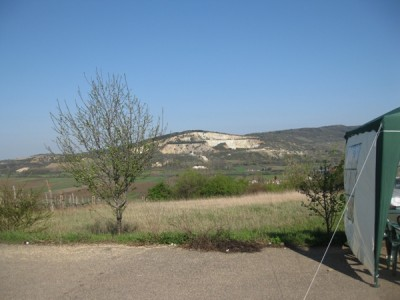
The mountain next to Kerestir
This entire hill was owned by a poor Jew whom Rabbi Yeshaya blessed with wealth. He became rich from fishing that miraculously came to him until he was able to purchase a vast tract of land. The land was owned by the family until the Holocaust.

A nest next to the grave of Rabbi Yeshaya, a common sight



